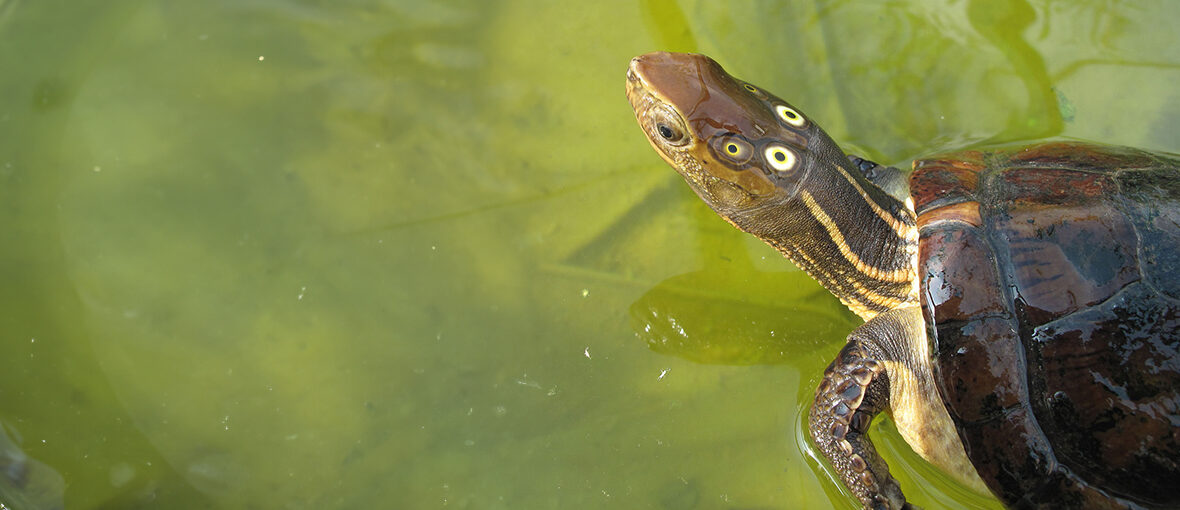
The four-eyed turtle is so named for the 2 bright yellow or green spots located on the back of their head, known as eyespots. They hail from southern China and Hainan, in the Annamite Mountains, the northeastern region of Laos, and in the mountains of northern and central Vietnam. Sadly, these cool turtles face the threats of habitat loss and destruction at the hands of farming and renewable energy; overfishing; and over harvesting for the exotic pet trade & traditional medicine. The IUCN lists these turtles as Critically Endangered and their populations are decreasing.
First the Stats…
Scientific name: Sacalia quadriocellata
Weight: Up to 5+ ounces
Length: Up to 5.9 inches
Lifespan: Up to 50 years
Now on to the Facts!
1.) A male individual has successfully produced hybrids with the Golden coin turtle while in captivity.
2.) It is presumed that the Chinese false-eyed turtle (Sacalia pseudocellata) is actually derived from a hybrid specimen of these turtles.
3.) They prefer brooks, freshwater streams, and ponds in woodlands, typically in mountainous habitats.
4.) Being omnivores (eat plant and animal matter) they feast on crickets, worms, snails, aquatic plants, lettuces, greens, and select fruits.
5.) There is presently an extensive communication between zoos and conservation personnel in Vietnam whose primary goal is to coordinate various recovery programs for these turtles. The recovery programs include legal protections for the turtles which will affect turtle trading.
But wait, there’s more on the four-eyed turtle!
6.) Large amounts of turtle shells are used as an ingredient in Traditional Chinese Medicine. For example, Taiwan confirmed that 940 tons of hard shelled turtle bone and 200 tons of soft shell turtle bones were imported between 1992 – 1998.
7.) The Asian Turtle Program has assisted in publicizing turtle conservation throughout Asia. The ATP, which is a branch of Indo-Myanmar Conservation, has a regularly updated website with up-to-date news and information that aids in spotlighting the status of endangered turtles throughout Asia.
Did you know…?
Due to living in a rugged terrain, these turtles are skilled climbers.
8.) Females lay 1 clutch of up to 4 eggs per year.
9.) Foxes, coyotes, feral dogs, ants, crabs, and mongooses all prey on the eggs of these turtles.
10.) These critters are primarily crepuscular (active at dawn and dusk).
Now a Short Four-Eyed Turtle Video!
Be sure to share & comment below! Also, check out the Critter Science YouTube channel. Videos added regularly!
Want to suggest a critter for me to write about? Let me know here.
Some source material acquired from: Wikipedia & IUCN
Photo credit: François Charles



